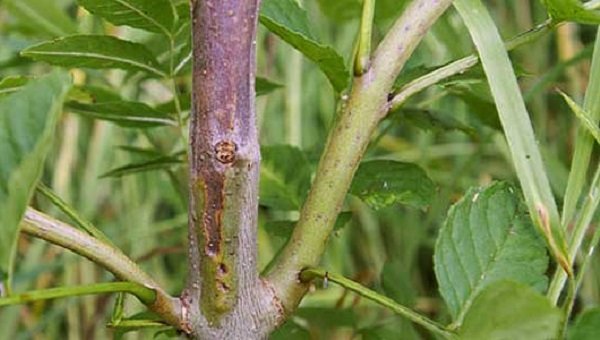Chalara ash dieback, also known as Hymenoscyphus fraxineus, is a serious fungal disease affecting ash trees across the United Kingdom and Europe. A common question being asked by woodland managers, local councils, gardeners, and environmentalists alike is: how is Chalara ash dieback spread? Understanding the pathways of infection is crucial to slowing down its advance and protecting what remains of our native ash population.
The fungus attacks the vascular system of ash trees, causing crown dieback, wilting leaves, bark lesions, and eventual tree death. Since its arrival in the UK in 2012, the disease has spread at an alarming rate. This article dives deep into how ash dieback spreads, how far it’s travelled, and how human and environmental factors influence its movement.
What is Chalara Ash Dieback and Why is it Dangerous?
Chalara ash dieback is caused by a fungus that originated in Asia, where native ash species have a natural resistance to it. However, when introduced into Europe, it encountered little natural defence. In the UK, Fraxinus excelsior (the common ash) is particularly vulnerable, with young trees dying quickly and mature trees steadily declining over time.
This disease presents a grave threat to UK biodiversity and woodland structure. Ash trees play a vital ecological role—supporting over 1,000 species including birds, insects, and fungi. Their decline could lead to cascading impacts across entire ecosystems. That’s why answering the question, how is Chalara ash dieback spread, is more than academic—it’s environmental survival.
How is Chalara Ash Dieback Spread Through Windborne Spores?
The primary method of Chalara ash dieback spread is via airborne spores. These tiny fungal spores are produced on fallen ash leaves and leaf stalks (rachises) from infected trees. Between late spring and early autumn, particularly June to September, the fungus enters its reproductive stage. During this period, millions of spores are released and carried by the wind over vast distances.
Spores can travel for tens of miles before landing on healthy ash trees. If they find the right conditions—moisture, mild temperatures, and a receptive host—they germinate and begin infecting the leaves. The fungus then spreads internally through the twigs and branches, disrupting the tree’s vascular system. This is why managing how is Chalara ash dieback spread through airborne means is incredibly difficult—once it’s airborne, it’s out of direct human control.
Human Activity and Infected Materials: A Secondary Route of Spread

While windborne spores dominate local and regional spread, human activity has greatly accelerated long-distance transmission. The transport of infected ash saplings, logs, firewood, or mulch introduces the disease into previously unaffected areas. This form of transmission was especially problematic before tighter regulations were enforced across the UK.
When people unknowingly move infected materials—perhaps to burn as firewood, use in landscaping, or replant ash in new areas—they contribute to a leapfrog effect in disease spread. Even today, the question of how does Chalara dieback spread remains urgent for those managing tree planting and wood sales. It’s vital to source trees from certified disease-free suppliers and follow government guidance on material movement.
Less Common But Concerning Pathways of Spread
Beyond wind and wood, how is Chalara ash dieback spread through less obvious routes? Spores can attach themselves to boots, bicycle tyres, forestry machinery, and even pet paws. When individuals walk through infected woodland and fail to clean their equipment or footwear, they may carry fungal particles into clean areas.
While these secondary transmission routes are less efficient than wind or timber, they pose a serious risk in high-traffic locations such as parks, nature reserves, and urban green spaces. Infected leaf litter and soil caught in mud can silently introduce the disease to new environments. Even small-scale spread like this can trigger large outbreaks over time.
Environmental and Climatic Influences on Disease Spread
Not all environments are equally susceptible. The layout of a woodland, the species diversity, and even the direction of prevailing winds all influence how is Chalara dieback spread within a region. Dense monocultures of ash trees make it easier for the disease to spread from tree to tree with little natural interruption.
Climate also plays a role. Moist, mild conditions in late spring and early summer provide the perfect conditions for spore release and infection. Areas with high rainfall or persistent leaf litter are more likely to support fungal development. Conversely, dry or diverse environments may offer some resistance, although none are truly immune.
The Current State of Spread in the UK
Since first being identified in a nursery in 2012, ash dieback spread has been relentless. It is now confirmed in nearly every region of England, Wales, Scotland, and Northern Ireland. Infected zones include everything from remote woodlands to urban streets and landscaped gardens. Major outbreaks have been observed in areas like East Anglia, Kent, and parts of Northern England.
Monitoring data from the Forestry Commission and DEFRA suggest that more than 80% of the UK’s ash trees could eventually be affected. Even with active intervention, the airborne nature of the disease makes containment difficult. The future of ash in the UK is likely to be defined by long-term adaptation and species diversification.
Can Chalara Ash Dieback Spread to Other Tree Species?
A common concern is whether ash dieback can spread to other trees, such as oak, beech, or maple. Current research suggests that the Hymenoscyphus fraxineus fungus is species-specific, targeting ash trees only. However, the indirect ecological consequences can extend beyond the ash itself.
For example, the death of large numbers of ash trees alters woodland structure, light availability, and soil composition. This impacts the growth of neighbouring species and may increase the spread of opportunistic pests and invasive species. So, while the fungus doesn’t infect other trees directly, the knock-on effects can still be severe.
Reducing the Spread: Prevention and Best Practice
Understanding how is ash dieback spread is the first step in prevention. Practical measures include not moving ash timber, burning infected material on-site, and regularly cleaning footwear and equipment when visiting affected woodlands. Public awareness is also key—anyone spotting symptoms should report them via TreeAlert or local council systems.
Landowners are encouraged to plant a mix of native trees to replace ash, helping woodlands remain resilient. In urban areas, the focus is on removing dangerous deadwood and managing the health of remaining trees. While there is no cure, slow and careful woodland management can reduce the speed of infection.
Conclusion: A Fight for the Future of Our Forests
So, how is Chalara ash dieback spread? Primarily through windborne spores and the careless movement of infected materials. But its spread is also deeply influenced by human behaviour, climate, and ecosystem design. It’s a complex battle, one that will define the future health of UK woodlands for decades to come.
Our response must be equally multi-faceted: education, legislation, responsible planting, and long-term monitoring. The sooner we understand the many ways Chalara dieback spreads, the better chance we have of safeguarding what remains of our iconic ash trees.
Frequently Asked Questions (FAQs)
How does ash dieback spread from one tree to another?
Mostly through windborne spores that land on healthy ash leaves during summer. Spores germinate and infect the tree’s vascular system.
Can ash dieback spread through firewood?
Yes. Infected firewood or logs can carry fungal spores and should never be moved between sites. Burn it locally if possible.
How far has ash dieback spread in the UK?
The disease is now confirmed in almost every UK region, affecting millions of trees from rural forests to city streets.
Can ash dieback spread to dogs, cats, or humans?
No, it cannot infect animals or humans. However, pets can accidentally carry spores on their paws from one area to another.
Is there a cure for ash dieback?
No known cure exists. However, some trees show natural resistance, and breeding programmes are underway to cultivate resilient strains.
You may also read: Beech Tree Diseases UK: Identify, Treat and Prevent Common Beech Problems




